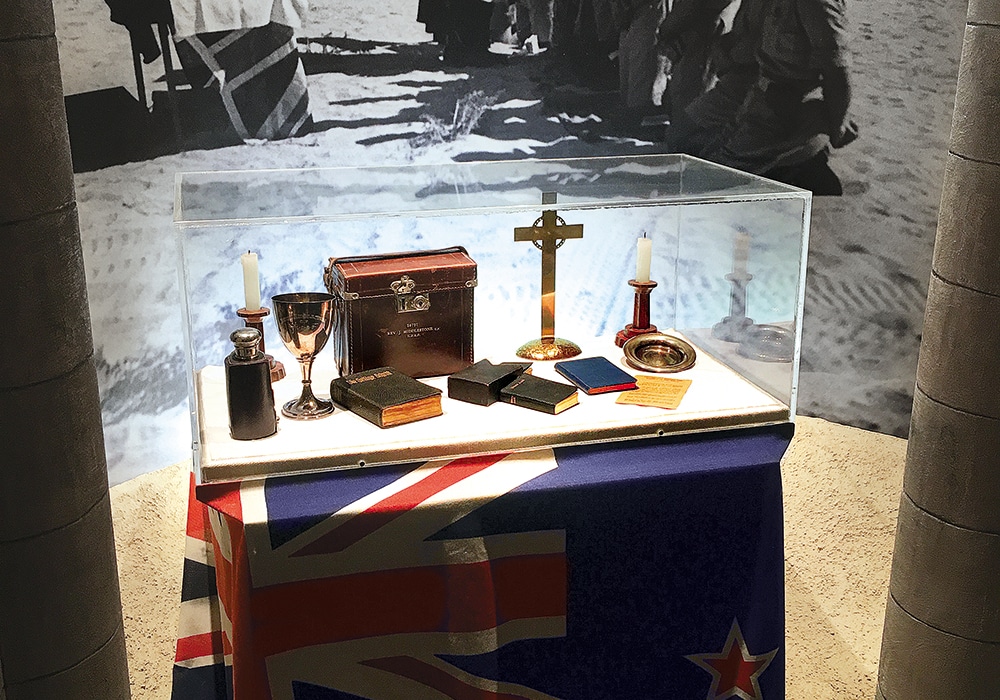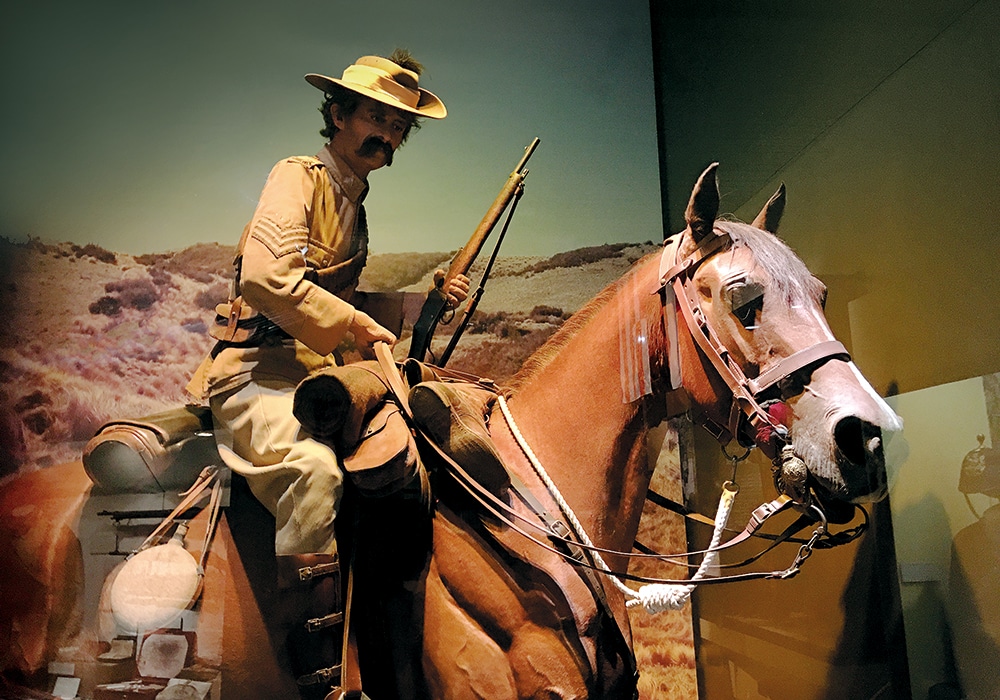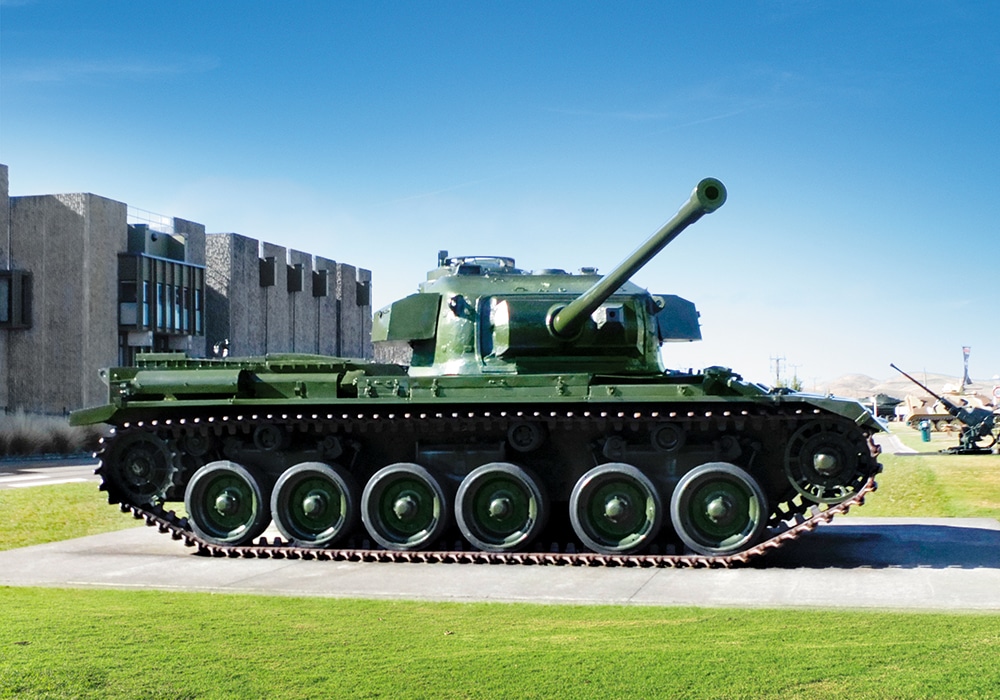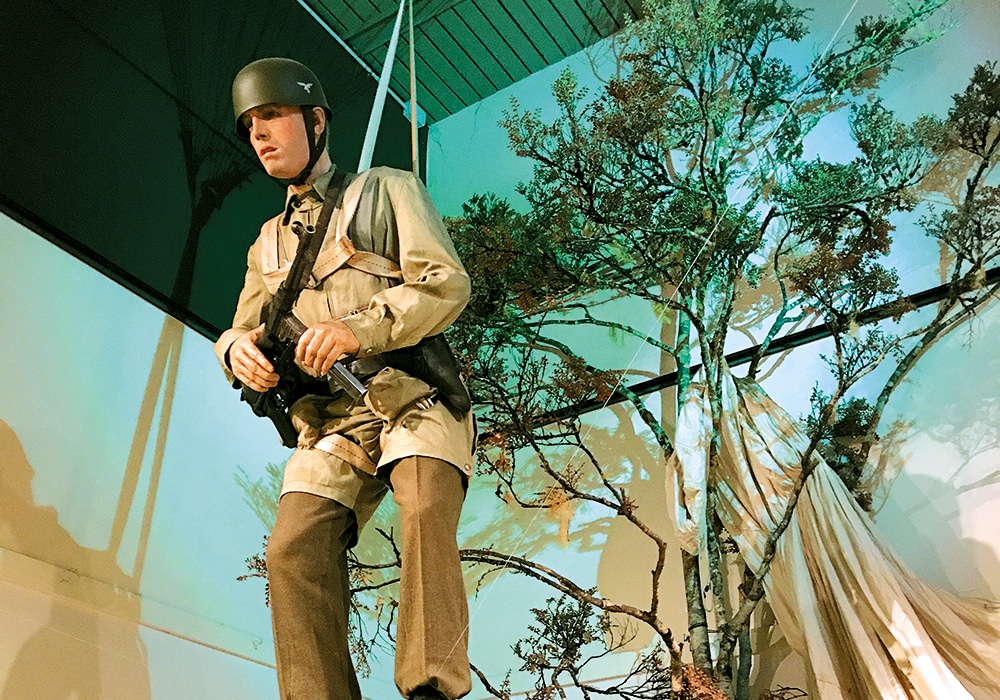Jill Malcolm visits poignant displays that remind us of the grim realities of war.
A week before Anzac Day this year, Waiouru was festooned with poppy flags, and it felt almost obligatory to revisit the National Army Museum as we passed through the town. There were other reasons to break our journey north: with snow freshly dumped on Mt Ruapehu, temperatures had plunged and Bill and I were hungry for warmth, sustenance and a decent cup of coffee.
The museum’s cafe had been recently reinvented. The Mess Tent opened in August last year and its military theme is followed through in the decor, the enamel coffee mugs, food served on tin plates and a menu of items such as Bunker Buster sausage rolls, Loaded Boot Laces, Sgt Major’s Breakfast and Cadet’s Delight. The cafe was warm, interesting and served good coffee. These braced me for the history lessons I was about to receive. In most museums, I quickly suffer from information fatigue. In this one, even on a third visit, I was still there two hours later, cramming in the facts and figures of my country in combat.
At the entrance, the first thing I noticed was that the Tears of Endless Mourning that usually cascade down an imposing greenstone wall had dried up. Apparently, the monument is undergoing maintenance. But as I passed the speakers through which the thousands of names and ranks of killed servicemen and women are endlessly intoned, I might well have added my own weeping. I heard the names but envisaged lost sons, husbands, fathers, brothers, sisters, spouses or friends.

Inside the museum, photographs, recordings, costumes, memorabilia and machinery give evocative glimpses of New Zealanders at war. Some displays and dioramas are so lifelike I sometimes felt I should apologise to the models for intruding on their activities. Despite all the prompting from the exhibits, the reality is still too big a leap for the imagination. However, the threads of history remind us – ‘lest we forget’. And the museum’s policymakers ensure that’s never going to happen. They are convinced of the value of engaging the nation in its less palatable past and educating children in the truth of their history to give them context for their future.
At one point a flock of pint-sized students surrounded me. They were gazing at the model of a German parachutist dangling from a tree. A little boy, probably about five years old, fixed his big brown eyes on me. “Is that man a goody or a baddy?” he asked. The answer was beyond me. “He’s just jumped out of an aeroplane,” I said lamely. “I think he was doing what he thought was best.”
The exhibitions begin with the New Zealand Wars and move through the Boer war, the First and Second World Wars, Korea and the debacle of Vietnam.
It’s in the detail that authenticity comes closer: a mother’s letter to her 18-year-old son who was killed before he received it; Gus, the majestic gelding representing the 8000 horses sent to the Anglo/Boer War, of which only one returned; the model of an Amazon, the name given to women who dressed in military uniform and demanded donations for the 1914–18 war effort; the dummy head which was held above the trenches to draw fire and reveal the location of the enemy; a rat foraging for scraps as a corporal squats on the ground eating beans from a mess tin; a soldier shaving under a camouflage net; an Italian pith helmet ridiculously bedecked with black feathers; and a decidedly unattractive scarf, crocheted by Queen Victoria. She awarded a scarf to one gallant soldier from each participating country. As much as the displays demonstrated the history, and occasionally the humour, of warfare, they were also stark reminders of its agonies, dislocations, destruction and futility.

Eventually, I headed for the cool clear air of the central plateau, grateful that I could leave the dark slipstream of war behind me, and acutely aware that many others had no such luck.
MORE INFORMATION
Waiouru’s National Army Museum is open 9am to 4.30pm every day except Christmas, and is on SH1 – you can’t miss it as you drive through Waiouru. Self-contained motorhomes can stay overnight in the museum carpark (park at the back of the museum, closest to the old headquarters building). You’ll need to register at the reception desk first. For pricing and more information, visit armymuseum.co.nz.







